Find out what the propagation and garden teams have been up to this week.
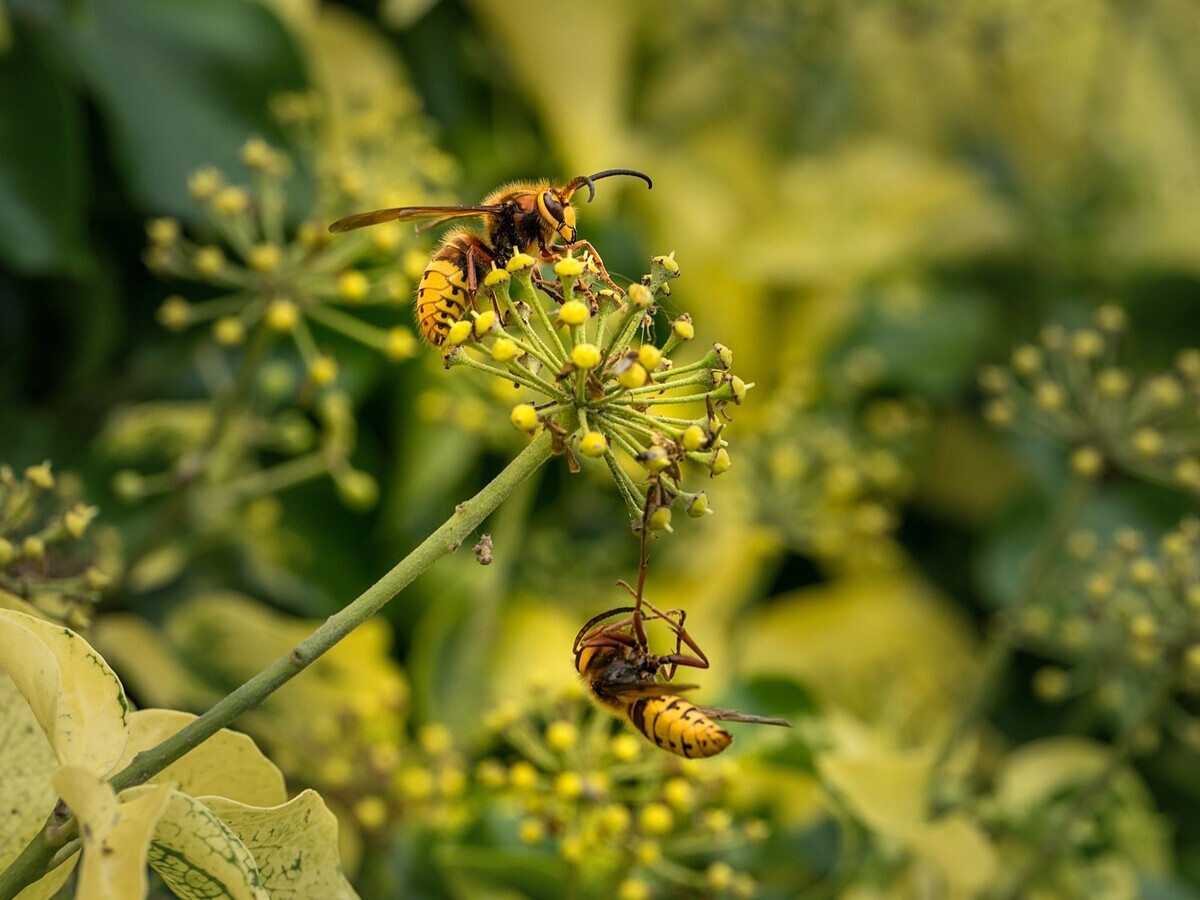
Wild Words from the Ground - October

Welcome to our blogs featuring the photos and sightings of wildlife in the garden (and outreach sites like Chattowood, the Meanwhile Garden and for the first time the Albert Roundabout) by our staff, whether in the office, shop, tea-room, nursery or garden. The images are curated and commented upon by Dr Chris Gibson, our Wildlife Advocate.
While the photos are not always of the highest quality – our staff are busy doing their main jobs! – they give a real feel of life in the garden, something we are very keen to encourage, as indeed was Beth.
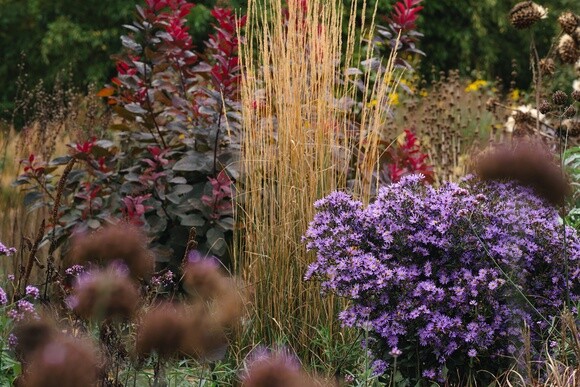
October, the height of autumn, and what better to start with than Kirsten’s photo of a Robin singing in the nursery. Yes, Robins sing throughout the year, but never more beautifully than in the still, chill air of this time of year, their wistful minor key in contrast to the assertive spring song. But the song remains the same in intent: keep out! And autumn, when there is an influx from Scandinavia and Russia, the territorial imperative is as crucial as ever.

Since the bird feeding station was set up in the spring, it hasn’t been used especially frequently. That is a good thing! Our birds are clearly capable of finding most of what they need around the garden, something that any ecological and sustainable garden should aspire to. But towards the end of the month, with natural resources in decline, the Great and Blue Tits arrived (see Nicola’s photo) and Matt was thrilled to see a Great Spotted Woodpecker in there, from the comfort of the tearoom!

Also on the move at this time of year, often well away from water where they breed towards protected hibernation sites. So it was good to see the one in Gill’s photo turning its attentions to the nursery among the detritus of leaf fall, just the sort of place we want to see them munching slugs and other potential pests.

Behind the scenes, Kathy has been looking after the beautiful chrysalis of a Large White butterfly, giving it the chance for the magic meltdown of metamorphosis to happen. And Rob photographed a dense patch of eggs, laid by a female Vapourer Moth on the silken cocoon from which she emerged. Females are wingless, and so flightless, and once they emerge as adults, they start pumping out pheromones to attract flying males. A male then drops in, attracted by her alluring scent, and does the business, but because mum is slug-like she can’t go anywhere far and just lays eggs around herself and her past life before perishing.
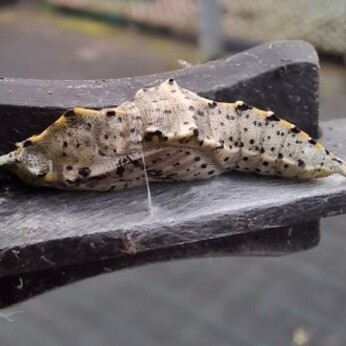

Out in the garden, our relatively few banks of ivy have been demonstrating their importance in the autumn banquet, providing nectar and pollen to all manner of bees, wasps, butterflies and hoverflies. Leanne’s photo shows the abundance of flowers being visited by a Drone-fly, while Nicola’s focuses upon a Hornet. They have been really quite abundant this summer and were still flying right up to the last day of the month. But ivy is not the one and only: Michaelmas daisies are just as attractive to pollinators, as Nicola’s snap of a Buff-tailed Bumblebee shows.
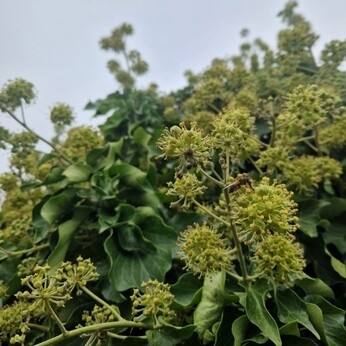

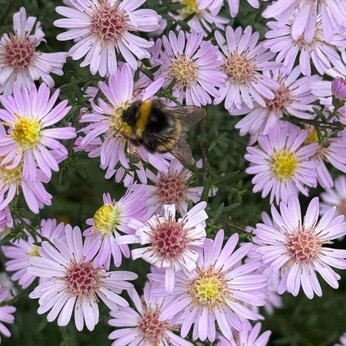
Readers might be surprised to see a photo of a ‘grasshopper’, quintessentially high summer insects, appearing in October. Well, Kirsten found not a grasshopper but a groundhopper, specifically a Slender Groundhopper with its thoracic plate extending backwards beyond the tip of its abdomen. Groundhoppers are much smaller than grasshoppers, and can be found as adults at any time of year; this is a species I have seen in the gardens only a couple of times over the years.
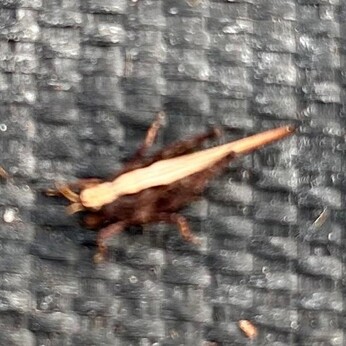
Autumn is famously the time for fungi to appear, but fungi are notoriously fickle! I would have thought a hot summer followed by a periodically damp, mild autumn would have seen fungi emerging in droves, but at least until now that has not been the case here. However Scott was on hand to photograph the Fly Agaric in its full glory. Almost always associated with birches as they form mycorrhizal associations with the roots, Fly Agarics – the definitive toadstool of every children’s book – do pop up every so often, but within a few days it will be nibbled by rabbits and slugs oblivious to the dangerously narcotic properties of its flesh to us.
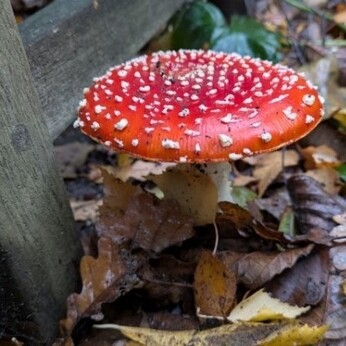
Over in the Beth Chatto Meanwhile Garden, David has, as always, been busy gardening, litter-picking and photographing the interesting wildlife. Firebugs, a new arrival in Britain, now seem to have become established since midsummer, and the teasel heads seem to be very attractive to Hairy Shieldbugs, here a nymph (immature stage) in which the nominative hairiness is most pronounced.


Similarly nestled in a wild carrot seed head is a small Garden Snail, and within an amaranth is a brownfield specialist harvestman Odiellus spinosus. The latter is apparently not uncommon in the southeast though I have never seen it!
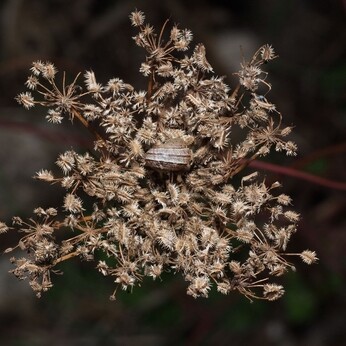

Finally, we tread new ground in these blogs by turning to geology. This lovely ammonite fossil and corresponding impression was found by Nico in the bank of the drive, along with seven others when the garden team got their eyes in. But where did they come from? The oldest rock in Essex, London Clay, is about 50 million years old, but ammonites became extinct at the end of the Cretaceous some 10 million years previously. It is tempting to suggest they could have been transported here from regions of older rocks by the proto-Thames which had various origins as far away as Snowdonia, Cornwall and Brittany but ran through what is now our garden, and indeed deposited in our gravelly subsoil. But realistically the answer may be more prosaic and recent, brought here by someone with an active, enquiring mind and interest in the natural world. Someone just like Andrew Chatto perhaps!

For a different perspective on the last month, see my personal blogs from October:
And so we descend into the depths of winter. Whether the season will bring us really cold weather and snow, who knows? But whatever is around the corner, we can be fairly sure that the light and life will return next year! These blogs may appear with reduced frequency until then, but thank you to everyone who has read them through the first year and especially to those who have taken the time to comment. All comments, good and bad, are very much valued!
In the meantime, please keep coming to the Gardens, although please note we will be closed December 23rd - February 2nd inclusive. Whatever the season, whatever the weather there is always something wonderful to see.


One of Beth’s little followers